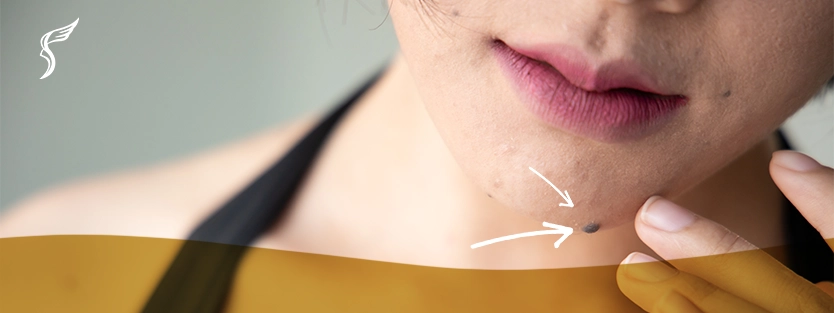Reasons to See a Dermatologist for Mole Removal
A mole is a brown or black skin lesion caused by skin cell overgrowth. Moles can appear anywhere on the skin, alone or in groups. As time passes, moles can slowly change, becoming raised or changing color. Since some moles are cancerous, patients should inform their dermatologist of any mole changes; this way, the mole can be monitored, biopsied, and removed if necessary.
There are important reasons why patients should always see their dermatologist for mole removal. Let’s take a closer look at them.
A dermatologist can determine if a mole is cancerous.
Skin cancer affects millions each year, making it the most common type of cancer. It occurs when the DNA in skin cells is damaged, causing an out-of-control growth of abnormal skin cells. Skin cancer can appear on the skin in various ways, including a dark lesion, a changing mole, a new growth, or a scar.
If our dermatologists think a mole is cancerous, they will biopsy it and send it away for further testing. If the biopsy shows cancer, they will utilize various treatment techniques depending on the type and severity of the skin cancer.
If a patient removes a mole at home or in a non-medical setting, they will not be able to discern if the lesion is cancerous. If it is cancerous, microscopic cancer cells will remain in the surrounding areas of the skin, even after the mole is removed. These cancer cells can multiply and spread to the tissue beneath the skin. If the cancer is melanoma, the most dangerous type of skin cancer, the cells can spread through the bloodstream to other areas of the body and become life-threatening.
A dermatologist can help lower the risk of infection.
Like any surgical procedure, there is a risk of infection when having a mole removed. Knowing this, our dermatologists pay close attention to the sanitation of their tools and their patients’ preoperative and postoperative care.
If a patient removes a mole at home or in a non-medical setting, there is a greater risk of infection, which can delay wound healing and cause a trip to the local emergency room.
A dermatologist can help minimize scarring.
Even though our dermatologists are highly trained in mole removal and try to avoid scarring as much as possible, scarring can and does occur. Scarring largely depends on the patient’s age, type of procedure, and the mole’s location.
If a patient removes a mole at home or in a non-medical setting, they significantly increase their risk of scar development, including bumpy, chicken pox-like, or indented scars.
A dermatologist can help prevent loss of movement caused by scarring.
If the mole is located on a joint, like the knuckles, our dermatologists take extra care to avoid scarring in the area so as not to impact joint movement.
If a patient removes a mole located on a joint at home or in a non-medical setting, they risk developing a scar that could limit motion in their joints.
A dermatologist can control blood loss during the procedure.
Before removing a mole, our dermatologists ask patients about their medical history and any medications they take, as some conditions and medications increase the likelihood of blood loss. Furthermore, our dermatologists are highly trained in mole removal and try to cause the least amount of injury to the site as possible.
If a patient removes a mole at home or in a non-medical setting, they increase their risk for uncontrollable blood loss; this could occur from a current medication, condition, or an accidental injury to the site, like nicking a blood vessel or a vein.
Before attempting a DIY mole removal or trying out the latest mole removal fad, we encourage you to make an appointment with one of our dermatologists at Shinagawa Aesthetics.
Our expert team of dermatologists can determine if you are a candidate for mole removal and walk you through safe mole removal options here at our clinic. We look forward to hearing from you soon!
Call our Patient Care Lines: (+632) 7-368 5238 l (+63) 917 862 7454 l (+63) 921 217 0517 for inquiries, questions, and appointments or talk to our consultants via LiveChat at https://shinagawa.ph so we can address and answer them for you.





Leave a Reply
Want to join the discussion?Feel free to contribute!